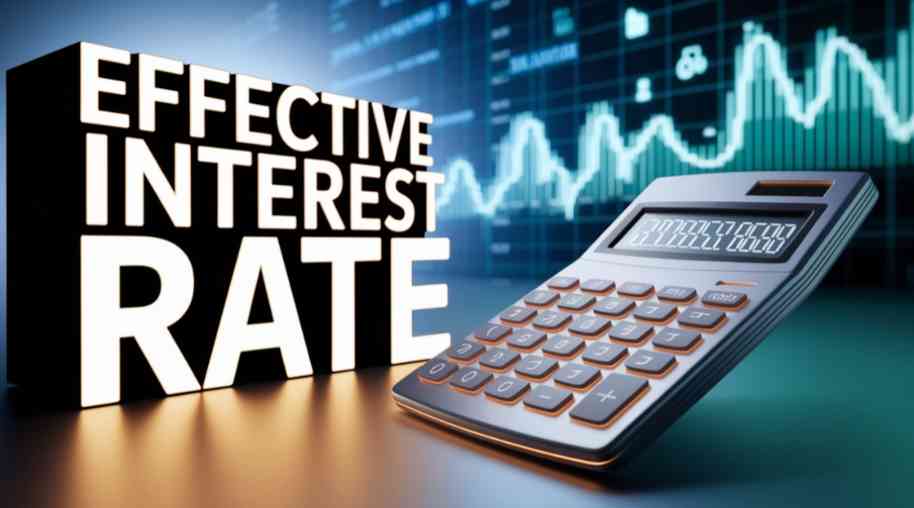EIR Full Form-Effective Interest Rate
by Shashi Gaherwar
0 1948
Understanding the Effective Interest Rate: A Complete Guide for Smart Borrowing & Investing
Introduction
Interest rates play a crucial role in financial decisions, whether you’re taking out a loan or making an investment. One of the most important concepts to understand is the Effective Interest Rate (EIR). Unlike the nominal interest rate, EIR accounts for compounding and provides a more accurate reflection of the true cost of borrowing or return on investment.

In this guide, we will explore what the Effective Interest Rate is, how it differs from other interest rates, its calculation, and why it matters in financial planning.
What is the Effective Interest Rate (EIR)?
The Effective Interest Rate is the actual interest earned or paid on a financial product due to compounding over a specified period. It is higher than the nominal interest rate when compounding occurs more than once a year.
EIR is used in banking, investments, and loans to provide a realistic picture of financial costs or returns.
Why is the Effective Interest Rate Important?
- Accurate Cost of Borrowing: Helps borrowers understand the true cost of loans, including compounding effects.
- Investment Comparisons: Investors can compare different financial products based on actual returns.
- Financial Planning: Provides better insight into budgeting, mortgage calculations, and savings strategies.
- Regulatory Compliance: Many financial institutions are required to disclose EIR to ensure transparency.
Difference Between Nominal Interest Rate and Effective Interest Rate
The Nominal Interest Rate is the stated interest rate without considering compounding. It does not reflect the actual cost of a loan or return on investment.
The Effective Interest Rate, on the other hand, considers the frequency of compounding, giving a more realistic rate.
Formula to Calculate EIR:
EIR = (1 + r/n)n - 1
Where:
- r = Nominal annual interest rate
- n = Number of compounding periods per year
For example:
- A loan with a 10% nominal interest rate, compounded quarterly (n = 4), results in an EIR of 10.38%.
- If compounded monthly (n = 12), the EIR increases to 10.47%.
How the Effective Interest Rate Affects Loans and Investments
Loans and Credit Cards
- Mortgages: A lower advertised interest rate may have a higher EIR if compounded frequently.
- Credit Cards: Monthly compounding significantly increases the total interest paid.
- Personal Loans: Comparing EIR ensures transparency in loan selection.
Investments and Savings
- Fixed Deposits: A higher compounding frequency results in a greater final return.
- Bonds: Investors should compare EIR to understand real returns.
- Mutual Funds: Effective returns depend on reinvested earnings and compounding.
How to Use EIR for Smarter Financial Decisions
- Compare Loan Offers: Always check EIR instead of just the nominal rate.
- Optimize Savings Strategies: Choose accounts with higher compounding frequencies.
- Understand Credit Card Costs: Avoid high-interest debt with frequent compounding.
- Evaluate Investment Returns: Look at EIR when comparing fixed deposits or bonds.
The Effective Interest Rate is a key financial metric that provides clarity on borrowing costs and investment returns. By understanding how EIR works and factoring in compounding effects, individuals and businesses can make informed financial choices. Whether you’re applying for a loan or investing in financial products, always consider EIR to ensure you get the best possible deal.
Further Learning Resources
If you’re passionate about building a successful blogging website, check out this helpful guide at Coding Tag – How to Start a Successful Blog. It offers practical steps and expert tips to kickstart your blogging journey!
For dedicated UPSC exam preparation, we highly recommend visiting www.iasmania.com. It offers well-structured resources, current affairs, and subject-wise notes tailored specifically for aspirants. Start your journey today!

Share:








Comments
Waiting for your comments